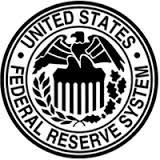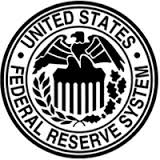
The U.S. Federal Reserve’s holdings are stuck at $4.5 trillion, and the question of when to let them shrink is beginning to simmer eight years after it launched the first of three controversial bond-buying campaigns to help save the U.S. economy.
To get the debate started, several policy makers have pushed it publicly. Big implications for the pace of future interest-rate hikes and for the dollar could be had by how the discussion plays out.
“They should start framing this for the market,” said Michael Gapen, chief U.S. economist at Barclays Plc. Investors need to hear what the “balance of policy” will be between the balance sheet and the central bank’s main tool, the federal funds rate, he said.
The Fed bought bonds in the first place because the sheer weight of the balance sheet helps hold down long-term U.S. borrowing costs. Officials could push yields higher by reducing demand in the bond market if they allow holdings to mature without continuing their current practice of reinvesting the principal.
The Fed might tighten policy more sharply if fiscal stimulus begins to overheat the economy. Echoing remarks by his Boston colleague Eric Rosengren, St. Louis Fed President James Bullard said he’d prefer to use the balance sheet to do some of that lifting.
“If you think the economy is growing more rapidly then you want, you can either continue to raise short-term rates, or you can also do balance sheet in conjunction with that,” Rosengren said in a Jan. 9 interview.
When the Federal Open Market Committee convenes again on Jan. 31, the topic may not be on the agenda and none of them has expressed urgency.
“I don’t think it’s something they’ll do in 2017,” said Mark Zandi, the New York-based chief economist at Moody’s Analytics Inc. “My guess is they view this as a 2018 project.”
Since Trump is expected to appoint a new leader at the Fed when Janet Yellen’s term as chair expires in February 2018, current policy makers may be keen to hammer out their strategy even if they don’t make changes to the balance sheet this year.
“That individual might want to undo what has been done in a fashion that could be disruptive to both the financial markets and the economy,” economist Raymond Stone, of Stone & McCarthy Research Associates in Princeton, New Jersey, wrote in a Jan. 19 note to clients. That “argues for the FOMC to at least have a plan in place, which is understood by the markets as well as the public, before Yellen’s term ends.”
By reinvesting principal repayments until its rate-hike cycle is “well underway” -- language that’s appeared in every policy statement since December 2015, right now, the Fed’s position is to maintain the balance sheet.
Making more room to lower if a shock brings back recession, while they push the fed funds rate further from zero, some officials will be keen to hold off. The rate is currently between 0.5 percent and 0.75 percent.
Meanwhile, requiring the central bank to make interest payments to Wall Street that will grow as rates rise, a big balance sheet has generated large bank reserves held at the Fed.
“Their objectives really are first and foremost macroeconomics,” said William Nelson, a former senior Fed staffer and now chief economist at The Clearing House, a banking trade group in New York and Washington. “But politics enters into the discussion.”
(Source:www.bloomberg.com)
To get the debate started, several policy makers have pushed it publicly. Big implications for the pace of future interest-rate hikes and for the dollar could be had by how the discussion plays out.
“They should start framing this for the market,” said Michael Gapen, chief U.S. economist at Barclays Plc. Investors need to hear what the “balance of policy” will be between the balance sheet and the central bank’s main tool, the federal funds rate, he said.
The Fed bought bonds in the first place because the sheer weight of the balance sheet helps hold down long-term U.S. borrowing costs. Officials could push yields higher by reducing demand in the bond market if they allow holdings to mature without continuing their current practice of reinvesting the principal.
The Fed might tighten policy more sharply if fiscal stimulus begins to overheat the economy. Echoing remarks by his Boston colleague Eric Rosengren, St. Louis Fed President James Bullard said he’d prefer to use the balance sheet to do some of that lifting.
“If you think the economy is growing more rapidly then you want, you can either continue to raise short-term rates, or you can also do balance sheet in conjunction with that,” Rosengren said in a Jan. 9 interview.
When the Federal Open Market Committee convenes again on Jan. 31, the topic may not be on the agenda and none of them has expressed urgency.
“I don’t think it’s something they’ll do in 2017,” said Mark Zandi, the New York-based chief economist at Moody’s Analytics Inc. “My guess is they view this as a 2018 project.”
Since Trump is expected to appoint a new leader at the Fed when Janet Yellen’s term as chair expires in February 2018, current policy makers may be keen to hammer out their strategy even if they don’t make changes to the balance sheet this year.
“That individual might want to undo what has been done in a fashion that could be disruptive to both the financial markets and the economy,” economist Raymond Stone, of Stone & McCarthy Research Associates in Princeton, New Jersey, wrote in a Jan. 19 note to clients. That “argues for the FOMC to at least have a plan in place, which is understood by the markets as well as the public, before Yellen’s term ends.”
By reinvesting principal repayments until its rate-hike cycle is “well underway” -- language that’s appeared in every policy statement since December 2015, right now, the Fed’s position is to maintain the balance sheet.
Making more room to lower if a shock brings back recession, while they push the fed funds rate further from zero, some officials will be keen to hold off. The rate is currently between 0.5 percent and 0.75 percent.
Meanwhile, requiring the central bank to make interest payments to Wall Street that will grow as rates rise, a big balance sheet has generated large bank reserves held at the Fed.
“Their objectives really are first and foremost macroeconomics,” said William Nelson, a former senior Fed staffer and now chief economist at The Clearing House, a banking trade group in New York and Washington. “But politics enters into the discussion.”
(Source:www.bloomberg.com)














